Science Frameworks
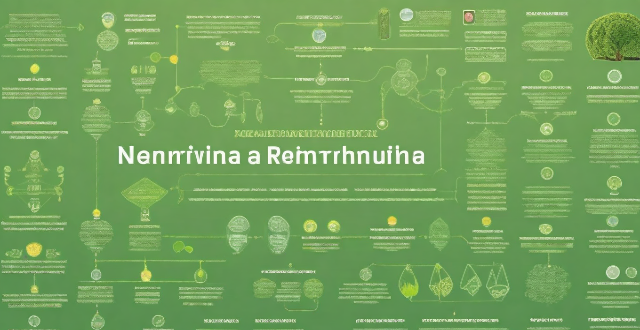
Can you provide examples of successful knowledge frameworks in various disciplines ?
Knowledge frameworks are structured approaches to organizing information within a field of study or practice. Successful examples include the human body systems in medicine, the OSI model in computer science, the language acquisition framework in linguistics, SWOT analysis in business, the ecosystem services framework in environmental science, and Bloom's Taxonomy in education. These frameworks facilitate specialized knowledge, standardize protocol development, guide teaching methods, support decision-making processes, highlight interdependence between natural systems and human well-being, and promote higher-order thinking skills.

How does the European Union approach climate change through its legal frameworks ?
The European Union has been at the forefront of addressing climate change through its legal frameworks. It has adopted a comprehensive and integrated approach that includes legislation, regulations, directives, and other legal instruments to mitigate greenhouse gas emissions and adapt to the impacts of climate change. This approach is based on the principles of sustainable development, prevention, polluter pays, and subsidiarity. Some key legal frameworks for climate change in the EU include the European Climate Change Programme, Emissions Trading System, Renewable Energy Directive, Energy Efficiency Directive, and Climate Action and Resilience Package. The implementation and enforcement of these legal frameworks are ensured through monitoring and reporting, evaluation and review, and enforcement actions. Despite facing challenges such as political will, technological innovation, and international cooperation, there are also opportunities for the EU to further strengthen its approach to climate change through legal frameworks by exploring innovative financing mechanisms, collaborative governance, and global leadership.

What are some innovative examples of companies integrating climate resilience into their CSR frameworks ?
Incorporating climate resilience into corporate social responsibility frameworks is becoming increasingly important. Here are some innovative practices by companies like Unilever, Microsoft, Adidas, Tesla, and Patagonia to reduce environmental impact and build resilience against climate change effects.
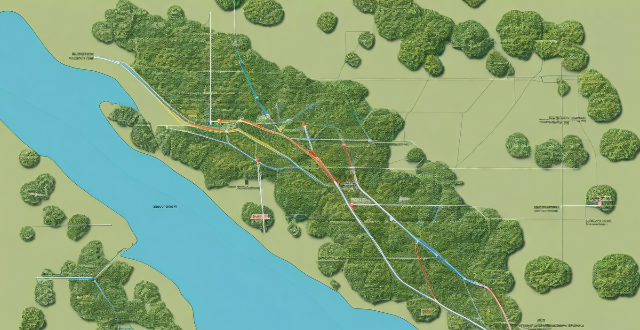
What are the legal frameworks and policies supporting the establishment of ecological protection areas ?
The establishment of ecological protection areas is supported by various legal frameworks and policies that aim to conserve biodiversity, protect ecosystems, and promote sustainable development. These frameworks and policies are essential for ensuring the effective management and protection of ecological protection areas. Some key legal frameworks and policies supporting the establishment of ecological protection areas include international legal frameworks such as the Convention on Biological Diversity (CBD) and the United Nations Convention to Combat Desertification (UNCCD), national legal frameworks such as National Biodiversity Strategies and Action Plans (NBSAPs) and national environmental policies, regional legal frameworks such as regional conservation agreements, and sector-specific legal frameworks such as forestry laws and regulations and wildlife conservation laws and regulations. When establishing ecological protection areas, it is essential to follow best practices such as conducting thorough scientific research, engaging local communities in the planning and management process, developing clear management plans, monitoring ecological protection areas regularly, and promoting sustainable tourism activities within them.

What is climate science ?
Climate science, or climatology, is the study of Earth's climate and the factors that influence it. It involves understanding the complex interactions between the atmosphere, oceans, land surfaces, and living organisms that shape our planet's climate system. Key areas in climate science include atmospheric science, oceanography, biogeochemistry, paleoclimatology, climate modeling, solar system climatology, climate impacts research, climate policy analysis, remote sensing, and data assimilation. The importance of climate science lies in its ability to help us understand natural climate variability, predict climate change, inform policy decisions, protect ecosystems, and enhance public awareness about climate-related issues. By studying historical climate data and projecting future scenarios, scientists can predict how global warming will affect weather patterns and sea levels. This information is crucial for formulating policies aimed at reducing greenhouse gas emissions and preparing for the consequences of climate change. In conclusion, climate science is an interdisciplinary field that integrates knowledge from various scientific disciplines to provide a comprehensive understanding of Earth's climate system. Its findings are essential for addressing one of the most pressing challenges facing humanity today: climate change.

What are the most effective methods for disseminating climate science information ?
To disseminate climate science information effectively, a multi-pronged approach combining educational programs, digital media, partnerships, community outreach, and policy advocacy should be employed. This involves integrating climate science into school curricula, organizing public awareness campaigns, leveraging social media, creating dedicated websites, partnering with government agencies and NGOs, hosting local events, and engaging in lobbying efforts and grassroots movements. By doing so, we can increase public understanding of climate change and foster a culture of sustainability.
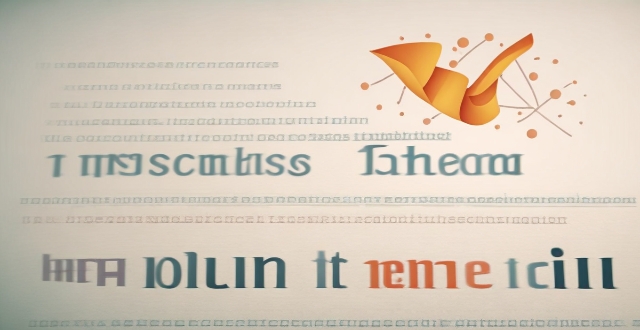
What are the latest advancements in sports science ?
The text discusses the latest advancements in sports science, including wearable technology, nutritional science, biomechanics, and mental training. Wearable technology provides real-time data on an athlete's performance, while nutritional science focuses on specialized diets and supplements. Biomechanics studies human movement to improve form and reduce injuries, while mental training techniques help build confidence and manage stress. These advancements have revolutionized athletic performance across all levels of competition.

What is the impact of climate science misinformation on public perception and behavior ?
Text: Impact of Climate Science Misinformation on Public Perception and Behavior Climate science misinformation can lead to increased skepticism towards climate change, polarization of views, undermining of trust in science, influence on policy decisions, and delayed action on addressing climate change. To combat these effects, promoting accurate information about climate change is crucial through education, media campaigns, and transparent communication from scientists and policymakers.
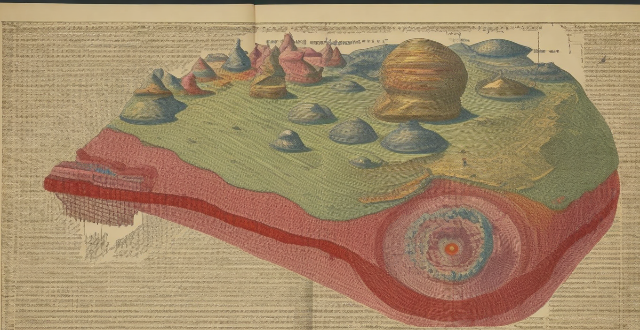
How can citizen science contribute to biodiversity research and conservation ?
This article explores the role of citizen science in enhancing biodiversity research and conservation efforts. It highlights how involving the general public in scientific projects can boost data collection, raise environmental awareness, and support conservation initiatives. The article also provides examples of successful citizen science projects that have contributed significantly to understanding and protecting biodiversity.

How can we encourage more girls to pursue careers in science and technology ?
To encourage more girls to pursue careers in science and technology, several strategies can be employed, including introducing female role models in STEM fields, offering targeted scholarships, creating supportive learning environments, fostering industry collaboration, promoting diverse perspectives, building confidence, improving media representation, advocating for policy changes, and engaging communities. Implementing these measures can help create an environment where girls feel empowered to explore and excel in science and technology.

How have advancements in materials science impacted sports equipment design ?
Advancements in materials science have significantly impacted sports equipment design, improving durability, performance, safety, comfort, and customization. Examples include carbon fiber bats, advanced composite tennis racquets, titanium golf clubs, aerodynamic cycling helmets, shock-absorbing running shoes, breathable athletic apparel, customized orthotics, and personalized mouthguards. These innovations not only enhance the athletes' performance but also reduce waste, making it an environmentally friendly option.

Can you share a story about a woman who has made significant contributions in science or technology ?
Marie Curie's life and work epitomize scientific breakthrough and personal resilience. Born in a restricted society, she overcame numerous obstacles to become the first woman to win a Nobel Prize and the only person to win in two different sciences. Her pioneering research on radioactivity led to advancements in physics, chemistry, medicine, and technology. Despite facing significant gender bias, Marie's dedication and achievements have made her a timeless inspiration for scientists worldwide.

How do we ensure that climate decisions are based on sound science ?
The text discusses how to ensure that climate decisions are based on sound science. It suggests a multi-faceted approach that includes ensuring data quality and integrity, promoting interdisciplinary collaboration, and enhancing public understanding and involvement. The author emphasizes the importance of rigorous research, maintaining data integrity, encouraging collaboration between different fields, integrating traditional knowledge and local expertise, educating the public about climate science, and encouraging public participation in decision-making processes. By adopting these strategies, we can make informed decisions that effectively address the challenges posed by climate change.

What are some tips for making science experiments at home for educational purposes ?
Science experiments are a great way to engage children in learning about the natural world around them. Here are some tips for conducting science experiments at home for educational purposes: ## 1\. Choose Age-Appropriate Experiments Select experiments that are suitable for your child's age and ability level. Younger children may enjoy simple experiments involving colors, shapes, and basic physical properties, while older children can tackle more complex concepts such as chemical reactions or electricity. ## 2\. Gather Materials in Advance Make sure you have all the necessary materials before starting the experiment. This will help avoid interruptions and frustration during the process. Create a list of required items and gather them ahead of time. ## 3\. Follow Safety Guidelines Safety should always be a top priority when conducting science experiments at home. Ensure that you and your child follow proper safety guidelines, such as wearing protective gear (e.g., goggles, gloves) and working in a well-ventilated area. ## 4\. Involve Your Child in the Process Encourage your child to participate in every step of the experiment, from planning to execution. This will not only make the experience more enjoyable but also help them develop critical thinking skills and problem-solving abilities. ## 5\. Observe and Record Results Observing and recording results is an essential part of any scientific experiment. Encourage your child to take notes throughout the process, documenting their observations and findings. This will help them understand the importance of data collection and analysis in science. ## 6\. Discuss Results and Implications After completing the experiment, discuss the results with your child. Ask questions about what they learned, how the experiment could be improved, and what implications their findings might have on real-world applications. This will help foster their curiosity and interest in science. ## 7\. Clean Up Properly Teach your child the importance of cleaning up after themselves by ensuring that all materials are properly disposed of and surfaces are wiped down. This will help maintain a safe and organized environment for future experiments.

What are the most effective ways to engage young people in climate science communication ?
Engaging young people in climate science communication is crucial for creating a sustainable future. Here are some effective ways to do so: 1. Use interactive and engaging methods such as gaming and simulations, visualization tools, and interactive workshops to make complex climate concepts more accessible and fun to learn. 2. Involve young people in the process by involving them in participatory research, citizen science projects, and advocacy and activism to increase their ownership and interest in climate science. 3. Make it relevant to their lives by providing localized information, discussing career opportunities, and sharing personal stories to help young people understand the impact of climate change on their lives and communities. By using these strategies, we can inspire the next generation of climate leaders and create a more sustainable future for all.
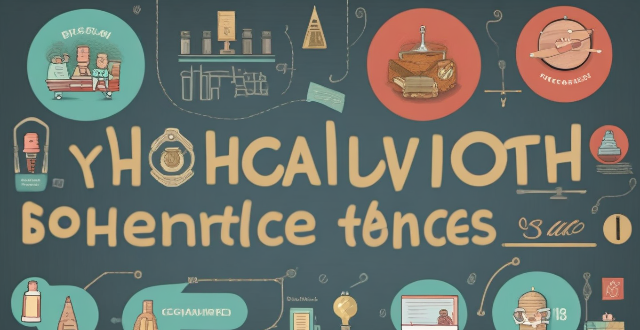
What are the psychological barriers to accepting climate science, and how can they be overcome ?
The text discusses psychological barriers to accepting climate science, including cognitive dissonance, confirmation bias, the scary world scenario, mistrust of science, perceived lack of control, narratives of doom, tribalism, and optimism bias. Strategies for overcoming these barriers involve education and awareness, inclusivity and dialogue, and empowerment and action. By addressing these barriers and implementing strategies for change, a more informed and engaged public can be created to tackle the challenges of climate change head-on.

How do we overcome the challenges of communicating complex climate science concepts to non-scientists ?
Overcoming the Challenges of Communicating Complex Climate Science Concepts to Non-Scientists: Tips and Strategies for Making Climate Science Accessible and Understandable.
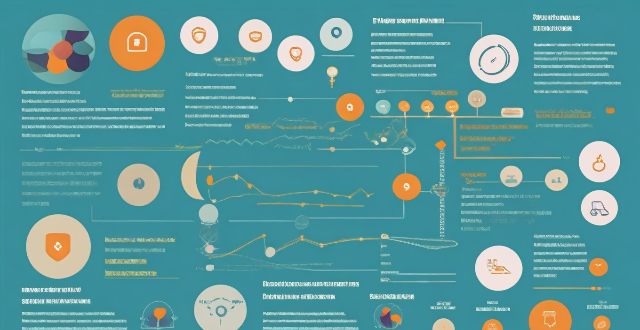
How does TCFD differ from other sustainability reporting frameworks ?
The Task Force on Climate-related Financial Disclosures (TCFD) is a unique sustainability reporting framework that focuses specifically on the financial risks and opportunities associated with climate change. It differs from other frameworks such as the Global Reporting Initiative (GRI) and the Sustainability Accounting Standards Board (SASB) in several key ways, including its exclusive focus on climate change, emphasis on financial implications, stakeholder engagement, specific recommendations for reporting, and integration with financial reporting. TCFD's approach helps companies effectively communicate their climate-related financial risks and opportunities, making it a valuable tool for navigating the complexities of climate change and its potential impact on their bottom line.

How has financial regulation evolved over time ?
The evolution of financial regulation has been marked by significant changes in response to economic crises, technological advancements, and shifts in political ideologies. From the laissez-faire approach of early days to the rise of regulatory frameworks during the Great Depression, through the deregulation era of the late 20th century, and the renewed emphasis on regulation following the Global Financial Crisis, financial regulation has adapted to maintain stability and promote growth within the financial sector. The digital age presents new challenges, requiring regulators to adapt existing frameworks to accommodate technological innovations while ensuring consumer protection and systemic stability.

How do climate adaptation strategies fit into environmental law frameworks ?
Climate adaptation strategies are vital for reducing vulnerability to climate change and fit into environmental law frameworks by providing a legal basis for implementation. These strategies involve measures to help communities and ecosystems adapt to changing climatic conditions. Environmental laws establish principles like the precautionary principle and intergenerational equity, guiding climate adaptation development. Integrating adaptation into existing environmental laws is crucial for effective implementation. Key components of adaptation strategies include vulnerability assessment, plan development, measure implementation, and progress monitoring. Challenges in implementing adaptation through environmental law include insufficient authority, resource constraints, and lack of coordination, but opportunities exist to enhance legal mandates, provide financial incentives, and promote cross-sector collaboration. Overall, climate adaptation strategies are essential within environmental law frameworks to ensure reduced vulnerability and enhanced resilience to climate change impacts.

What are the legal frameworks for addressing climate change and human rights ?
The text discusses the various legal frameworks that exist to address climate change and human rights, including international agreements, national laws, and regional regulations. It highlights the importance of a multifaceted approach to tackle this complex issue and emphasizes the need to protect vulnerable communities' rights in the process. The text also provides examples of specific initiatives taken by different entities such as the United Nations, the United States, the European Union, the African Union, and the Association of Southeast Asian Nations. Overall, the text suggests that by working together at these different levels, we can create a more equitable and sustainable future for all.

What are the legal and policy frameworks for water resource management at the national and international levels ?
Water resource management is a critical issue that affects the sustainability of ecosystems, the economy, and human well-being. To address this challenge, various legal and policy frameworks have been established at both national and international levels. At the national level, water resource management is governed by a combination of laws, regulations, and policies aimed at ensuring equitable access to water resources, protecting the environment, and promoting sustainable development. International legal and policy frameworks play a crucial role in addressing transboundary water issues and promoting global cooperation on water resource management. Effective water resource management requires a comprehensive approach that encompasses both national and international legal and policy frameworks.

What are the challenges in enforcing international environmental laws related to climate change ?
Enforcing international environmental laws related to climate change faces challenges such as a lack of global leadership and coordination, inadequate legal frameworks, economic and developmental imbalances, scientific uncertainty and information gaps, socio-cultural factors, and technological and infrastructure limitations. These issues require cooperation among nations, stronger legal frameworks, balanced economic development, improved scientific understanding, cultural sensitivity, and technological advancement to overcome.

What are the most common ESG reporting frameworks used by companies ?
The Global Reporting Initiative (GRI) is a widely used sustainability reporting framework that provides a standardized approach for companies to report on their economic, environmental, and social performance. The GRI consists of several standards, including those related to disclosure principles, management approach, economic performance, environmental performance, social performance, governance, non-financial information disclosure, reporting principles, boundaries, guidelines, content, quality, frequency, language, format, timeframe, period, entities, scope, limitations, assurance, certification, training, tools, collaboration, innovation, stakeholder engagement, data quality, impact assessment, risk management, performance indicators, materiality analysis, and stakeholder engagement process. These standards help organizations prepare high-quality GRI reports that are accurate, reliable, and consistent across different organizations and sectors.

What initiatives can be taken to improve scientific literacy among women ?
Scientific literacy is important for making informed decisions about health, environment, and technology. Women often face barriers to accessing scientific education and resources. To improve scientific literacy among women, initiatives such as educational programs, community outreach, media representation, and policy changes can be taken. These include integrating STEM subjects into the school curriculum, offering girls-only classes, connecting young girls with female role models in STEM fields, establishing community-based science clubs for women of all ages, organizing public lectures by women scientists, conducting workshops and training sessions on various scientific topics, highlighting stories of successful women in science through media platforms, encouraging more women to pursue careers in science journalism, utilizing social media platforms to create awareness about scientific issues affecting women's lives, advocating for increased funding for educational programs and research initiatives focused on improving women's participation in STEM fields, lobbying for policies that ensure equal opportunities for women in science education and employment, and implementing mandatory gender bias training for educators and professionals working in STEM fields. By implementing these initiatives, we can create a more inclusive environment that encourages women to explore and contribute to the field of science.

What are the different types of academic competitions available ?
Academic competitions are structured events where students can showcase their knowledge, skills, and talents in various subjects. They provide a platform for students to test their abilities, gain recognition, and potentially earn scholarships or other rewards. These competitions are crucial for developing critical thinking, problem-solving, and teamwork skills. There are various types of academic competitions, including mathematics, science, literature and language, social sciences, and technology and engineering. Each category has national and international competitions that challenge and stimulate high school students.
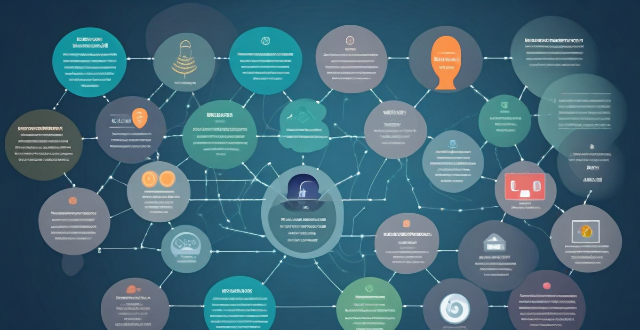
How can we effectively communicate climate science to the general public ?
Effective communication of climate science to the general public is crucial for raising awareness and promoting action on climate change. Strategies include using simple language, visualizing data, telling stories, providing actionable steps, collaborating with influencers, and addressing concerns and misconceptions.

How can we make climate science more accessible and understandable to people from diverse backgrounds ?
Climate science is crucial but complex. To make it accessible, use simple language and visuals, incorporate cultural perspectives, provide interactive learning, and encourage public participation.
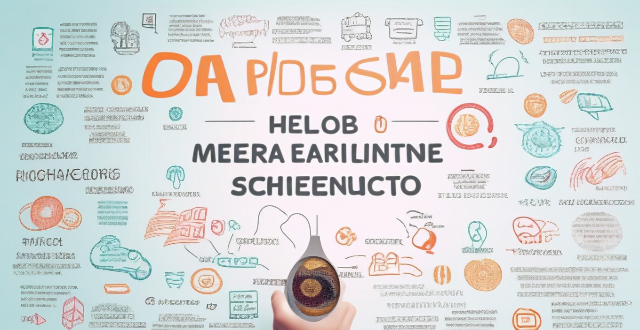
What role does social media play in the communication of climate science ?
The text discusses the role of social media in climate science communication. It highlights three main ways in which social media influences this field: awareness and education, engaging with the public, and promoting action and advocacy. The author provides examples for each category, such as sharing infographics and videos on platforms like Facebook or Twitter to educate people about climate change, conducting polls and surveys to gather feedback from the public, and initiating challenges or campaigns to encourage sustainable practices. The text concludes by emphasizing the importance of leveraging social media to spread accurate information, foster dialogue, and inspire collective action towards mitigating the effects of climate change.